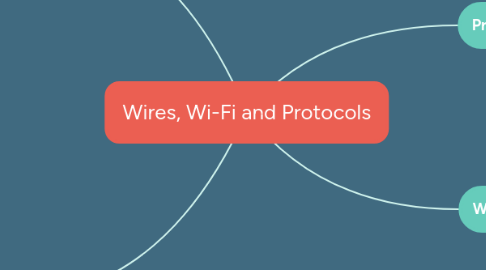
1. Wires
1.1. Fibre-Optic
1.1.1. Disadvantages
1.1.1.1. Expensive
1.1.2. Advantages
1.1.2.1. Effective
1.1.2.2. Fast (Speed of Light)
1.1.2.3. Reliable (no interference)
1.2. Ethernet
1.2.1. Disadvantages
1.2.1.1. Unreliable (suffer interference)
2. Topologies
2.1. Star
2.1.1. Advantages
2.1.1.1. inexpensive to add more nodes to the network
2.1.2. Disadvantages
2.1.2.1. It is expensive to first install
2.1.2.2. Requires more hardware
2.1.2.3. System shuts down when the server loses power
2.2. Bus
2.2.1. Advantages
2.2.1.1. Easy to connect
2.2.1.2. cheaper. less cable is needed
2.2.1.3. reliable and simple.
2.2.2. Disadvantages
2.2.2.1. limited to a small geographical area.
2.2.2.2. if the main cable fails then the whole network fails aswell.
2.2.2.3. insecure
2.3. Mesh
2.3.1. advantages
2.3.1.1. can move a lot of data at once
2.3.1.2. lower maintenance, longer battery life
2.3.2. disadvantages
2.3.2.1. limited range between nodes
3. Protocols
3.1. Application Layer
3.1.1. FTP
3.1.2. HTTP
3.1.2.1. Provides user access to applications websites, files, email.
3.1.3. SMTP
3.2. Transport Layer
3.2.1. TCP
3.2.1.1. Provides transport of data between devices by splitting files into data packets and checking that they have been sent and received correctly.
3.3. Network Layer
3.3.1. IP
3.3.1.1. Provides the routing of data across the network by making use of addressing.
3.4. Physical Layer
3.4.1. Ethernet
3.4.1.1. Provides the physical transport of data through electrical signals etc.
